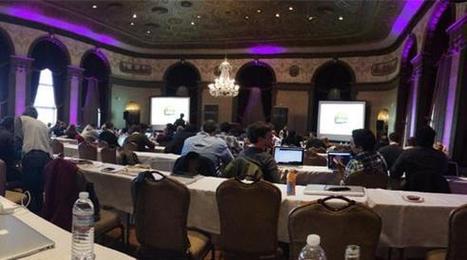This infographic illustrates what responsive web design is, how it works, and why you should make the switch.

|
Scooped by Martin (Marty) Smith |
Martin (Marty) Smith's insight:
Responsive Web Design
Here is an email I wrote to a friend this morning about responsive:
NO ONE understands mobile seo btw (lol). Not a huge leap to think that what makes a site responsive could also confuse the spider. Could also HELP the spider since the re-imagining of the information architecture should do things like:
* Move from novels to linked snippets.
* Rely on tags (tags are about to be HUGE because they create new dimensions into the data).
* Can open a site's content for social (reduce distance between THEM [customers] and US [site creators / managers]).
* Can open a site's content for social (reduce distance between THEM [customers] and US [site creators / managers]).
* Create clear meta data (goes with connected snippets).
That last bullet puts stress on current database thinking and tech. With this many windows into the same data a developer must know about how to cononicalize a URL (or the dupe penalties will be crushing). Responsive websites become an evolving puzzle. As new pieces get created they must fit the existing framework or blow the whole thing up.
That said, I don't see any way BUT thinking mobile first from here on out. In the end that is going to be a good thing for all of us, but transitioning is a bear :). Marty
That last bullet puts stress on current database thinking and tech. With this many windows into the same data a developer must know about how to cononicalize a URL (or the dupe penalties will be crushing). Responsive websites become an evolving puzzle. As new pieces get created they must fit the existing framework or blow the whole thing up.
That said, I don't see any way BUT thinking mobile first from here on out. In the end that is going to be a good thing for all of us, but transitioning is a bear :). Marty



 Your new post is loading...
Your new post is loading...
![How Responsive Web Design Works [Infographic] | Must Design | Scoop.it](https://img.scoop.it/5fsHa4eLiyWsI6RKVn4v8jl72eJkfbmt4t8yenImKBVvK0kTmF0xjctABnaLJIm9)


![10 Rock Solid Website Layout Examples | Design Shack [cool way to SEE web design] | Must Design | Scoop.it](https://img.scoop.it/oTupv3ms8sh4CpeucsgQDTl72eJkfbmt4t8yenImKBVvK0kTmF0xjctABnaLJIm9)






This infographic describes what responsive website design is and how to best accomplish it.